You’ve spent the last few years stacking emergency transitional food in the pantry, in the closet of the guest bedroom, and in the garage. You bought a grain mill and have stuffed pound after pound of rice, beans, pasta, and wheat berries into mylar. You’ve couponed until you’re blue in the face, joined a wholesale club, taken advantage of every sale on oatmeal and canned tuna. Even with all you’ve managed to put away, you realize in the back of your mind that, for the long-term, it will become necessary to shift from food storage to food production, so you’ve planted fruit trees in your landscape beds and stashed an impressive mix of vegetable seeds in the freezer.
But what if the transition isn’t as cut and dry? Environmental conditions, social unrest, illness within your family, or a steeper-than-anticipated learning curve could delay the ability to move into full-scale agricultural production. All of a sudden, then, your one-year food supply will have to stretch to 14 months or longer. Perhaps you discover too late that your stockpiled provisions, while loading you up with the necessary calories, lack one easy-to-overlook micronutrient.
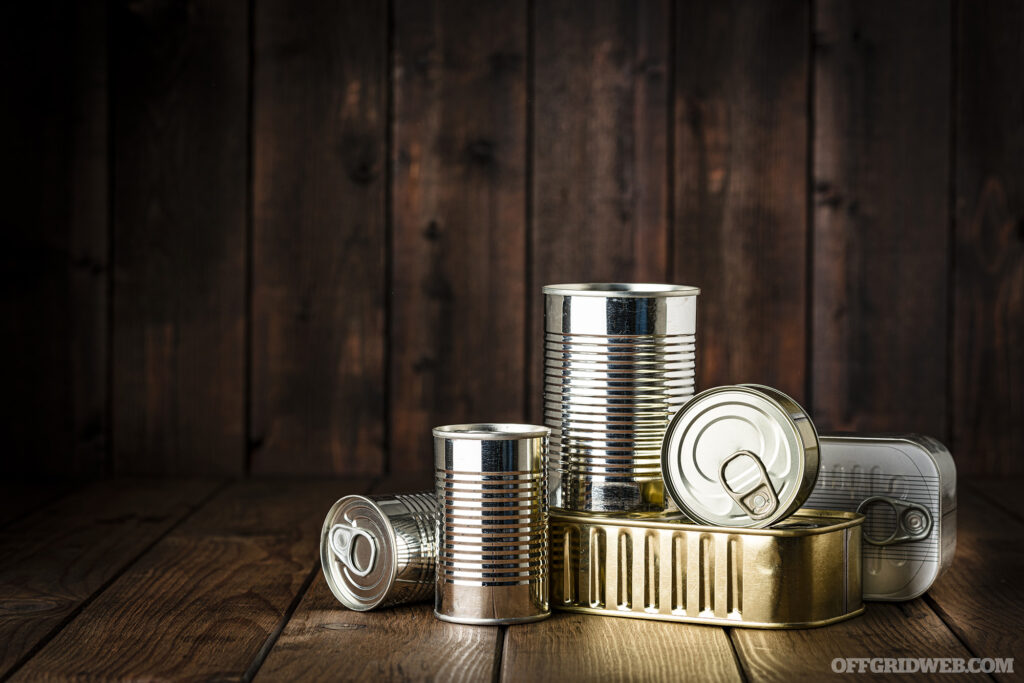
Food security during a major event should not only focus on stored food and Little House on the Prairie-esque self-sufficiency, but also on “transitional food production” — systems that can generate some nutrition even during a bugout or shelter-in-place scenario. Wise preppers should consider how they can implement smaller-scale food production that will help stretch their flour and freeze-dried meals, while giving them a wide range of nutrients. In the event of a delayed growing season, a crop failure, or a need to lay low a little longer, mushrooms, eggs, and sprouts are examples of sustainable foods that can help fill the gaps between what’s in the cupboards and what will eventually spring up in the garden. Furthermore, many families are accustomed to a good bit of variety in their diets, and these items can make the 99th serving of rice and beans a little more tolerable.
Transitional Food Systems Should Meet Three Criteria
1) They should be portable enough to be transported to a bugout location and back or moved into a sheltered space with relative ease.
2) They should provide significant nutrition for their bulk and weight.
3) The knowledge, skills, and equipment required to produce these foods should be easily attainable for the majority of folks.
Mushrooms To-Go
Mushrooms are the only non-animal food source of Vitamin D. They have more protein than most vegetables, they provide significant levels of riboflavin and niacin, and they’re relatively easy to grow — or at least some species are. While growing morels isn’t impossible, it’s not as reliable an undertaking as producing shiitakes or oysters.
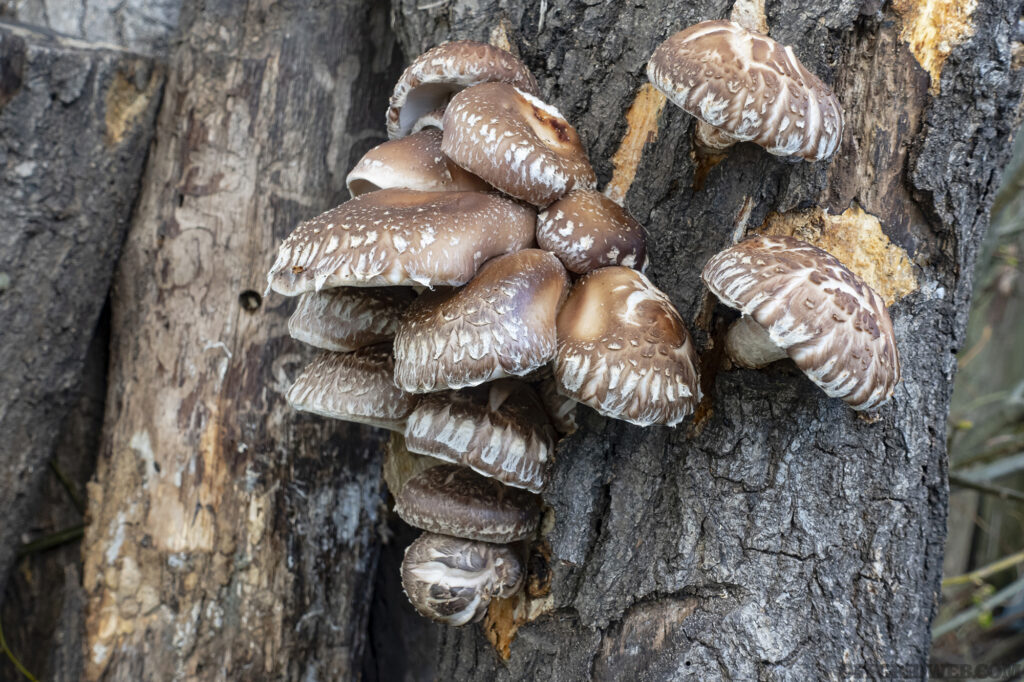
Foraging for wild mushrooms is an interest of a lot of self-sufficient families, but the production of mushrooms is an easy skill to learn. Just remember that some species prefer to grow on logs, while others like straw, wood chips, or compost. Your local cooperative extension office may offer workshops on growing mushrooms. It’s also possible to purchase online kits that consist of growing media pre-inoculated and ready to produce.
As an example of what’s possible, for less than $50, one can buy enough shiitake spawn to inoculate 20 small logs, using only a drill and hammer. The oak, beech, birch, or maple logs will go through a colonization period, which can take anywhere from six to 18 months. After that, each log can produce up to a pound and a half of mushrooms annually for as long as it takes for the log to completely rot down. In the case of oaks, that may be as long as five years. Logs that are already colonized and bearing are quite portable and can be tossed into the back of a pickup truck like firewood, ready to travel to a new site.
Sprouting Nutrition
The radish is an underdog of the vegetable world, usually grown as an afterthought by home gardeners, stuck into a spare corner of the garden and certainly not as esteemed as beans, corn, squash, or tomatoes. But radishes have a couple of characteristics that make them worthy of consideration as a survival crop:
1) Many varieties like Cherry Belle, French Breakfast, and Rover mature in 21 days. In other words, from the moment the seeds are placed in the ground, radishes will be ready to harvest in three weeks. That can translate to multiple crops each year, from spring through fall.
2) Both the roots and the greens can be eaten.
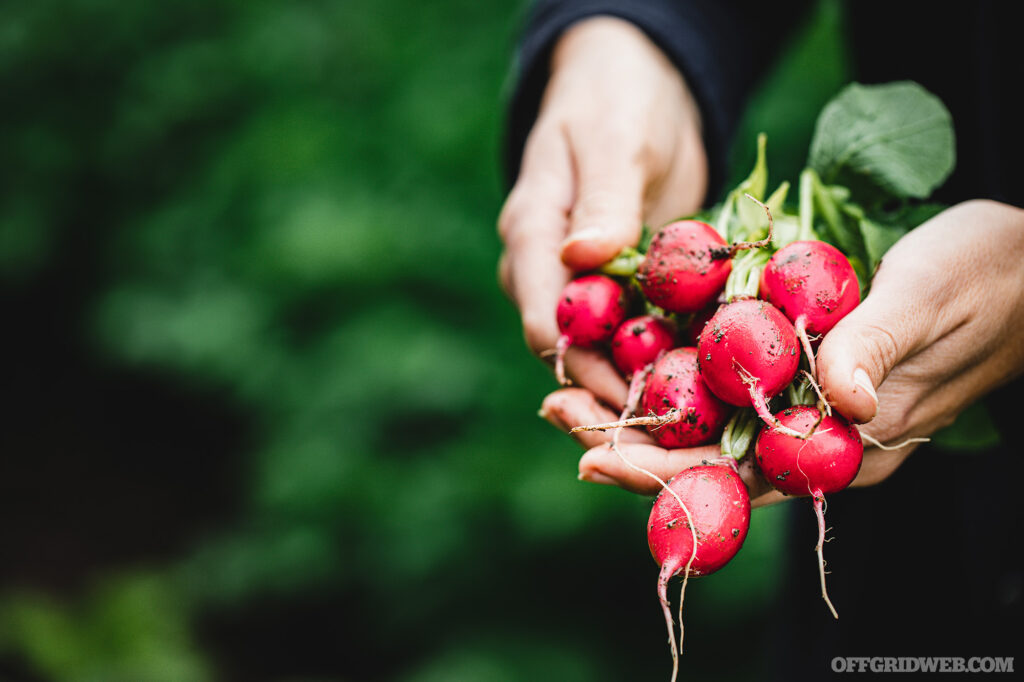
The thing that makes radishes versatile as a transitional food is that not only can the seeds be planted, but they can be sprouted indoors for a spicy boost of vitamins and minerals.
The equipment needed to sprout radishes (as well as alfalfa, mung beans, wheat berries, broccoli, onions) is minimal: a jar with a screened lid and some clean water. Soak the seeds for a few minutes and then strain the water off through the screened lid. Then, rinse them twice a day. Three tablespoons of seeds will yield about four cups of sprouts in less than a week.
Mobile Livestock
Farm animals can be a good source of protein, fertilizer, and pest control. Technically, if one has the trailer and the facilities and labor to load it, any livestock could be considered portable, but for most folks, that’s outside the realm of practicality. On the other hand, even children can carry and load poultry and rabbits.
A chicken will produce as many as 250 eggs a year, while some duck breeds will lay between 300 and 350. A couple of eggs per day for each member of a family is a strong justification for maintaining a small flock.
Taking small livestock with you, of course, means you also have to haul any feed or medicines they would require, but in the case of poultry the burden can be somewhat reduced if one selects breeds known for their foraging abilities. For chickens, that list would include Buckeyes, Egyptian Fayoumis, Plymouth Rocks, and Welsummers, and duck breeds counted as good foragers include Campbells, Welsh Harlequins, and Runners.
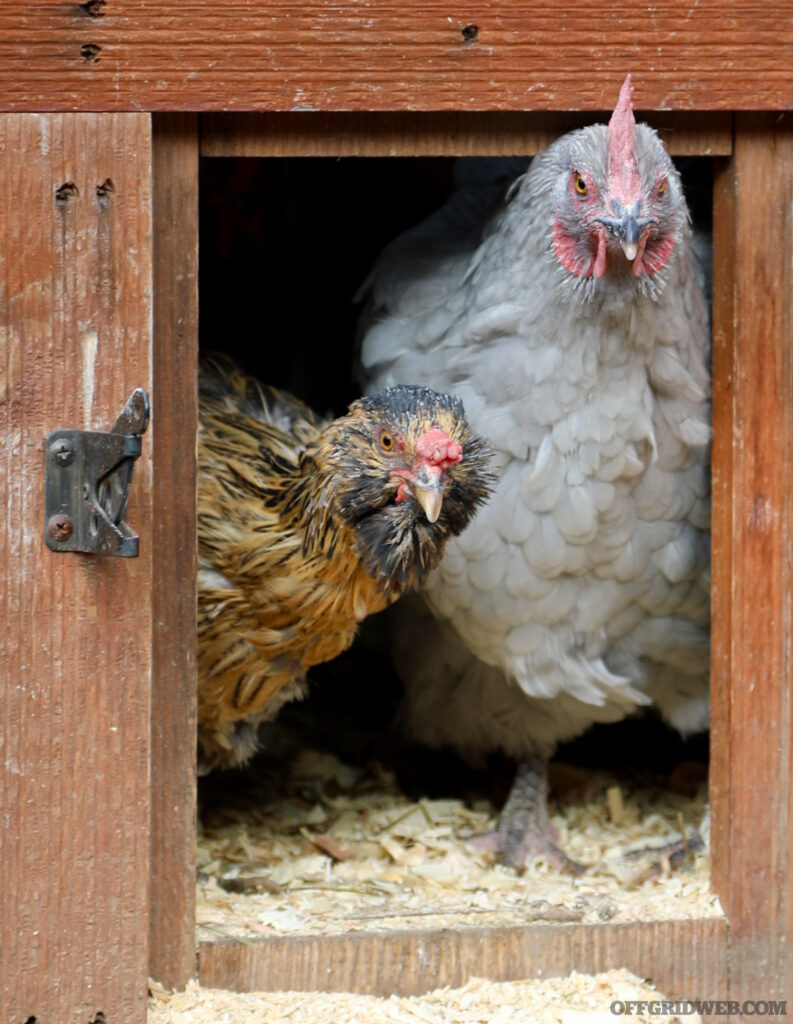
The internet is full of tips for reducing backyard poultry feeding costs, from fermenting their feed to producing your own supply of maggots or mealworms. (For any not repulsed by the notion of entomophagy, mealworms could double as a source of protein for human consumption.)
Other types of poultry can be advantageous, as well. Guineafowl are known for their “watchdog” screeching behavior and for their tick-scouring prowess, while geese may fill the role of bouncer in the poultry world, helping keep small predators away.
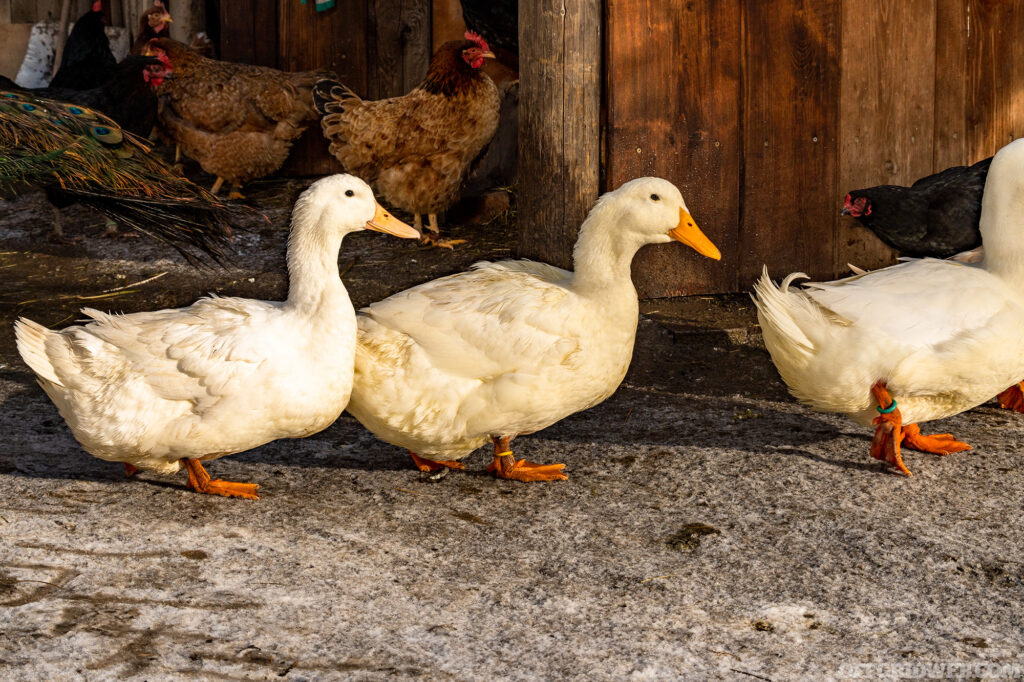
We could list honeybees as portable livestock, but there are a lot of moving parts, from managing Varroa mites and other pests to keeping swarming under control, so unless you’re headed into a SHTF situation with beekeeping know-how already under your belt, it may not be practical to learn what you need as quickly as you could with chickens. But if that’s the case, the pollination insurance that a colony of bees could provide to future farming efforts would mean a lot, in addition to the honey and wax they’d manufacture.
Grow Bags/Buckets
Not a food per se, but containers for planting crops are a good investment. Grow bags, buckets, or large flowerpots can provide the means for some food production during bugout scenarios or when conventional soil is compromised. These can be transported either pre-filled with soil or with the intention of filling with a growing medium once a destination is reached. A grow bag or container has many of the same advantages as a raised bed but with the added bonus of portability.
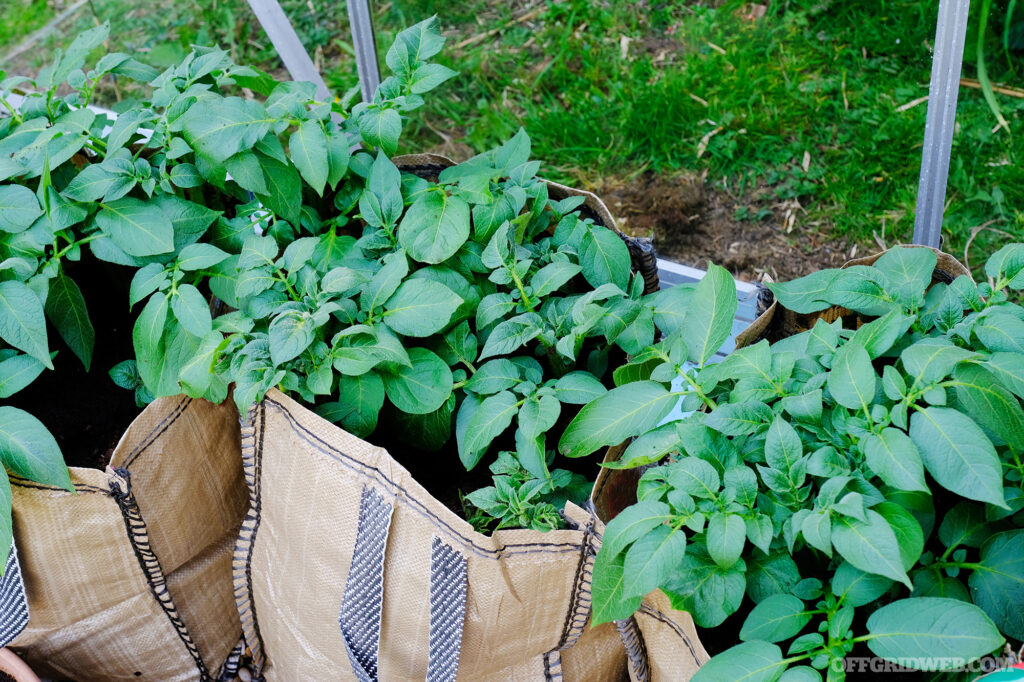
Even bags of cheap topsoil from the local garden center can be quickly converted to impromptu growing space by cutting an opening, amending with organic matter, and sowing seeds. In the interim, these bags of soil can be useful for fortifying a shelter. Root crops like potatoes, carrots, and beets do well in containers, as do tomatoes and peppers.
Even when suitable soil is lacking, buckets are conducive to simple, non-circulating hydroponic production, such as the system made popular by Bernard Kratky of the University of Hawaii. Buckets, net pots, clay pellets, and a small amount of water-soluble fertilizer specifically for hydroponics is all that would be required for Kratky hydroponics. Leafy vegetables like head lettuce or kale, as well as vegetables that produce a lot of fruits per plant like cherry tomatoes or peppers will thrive in this soilless method.
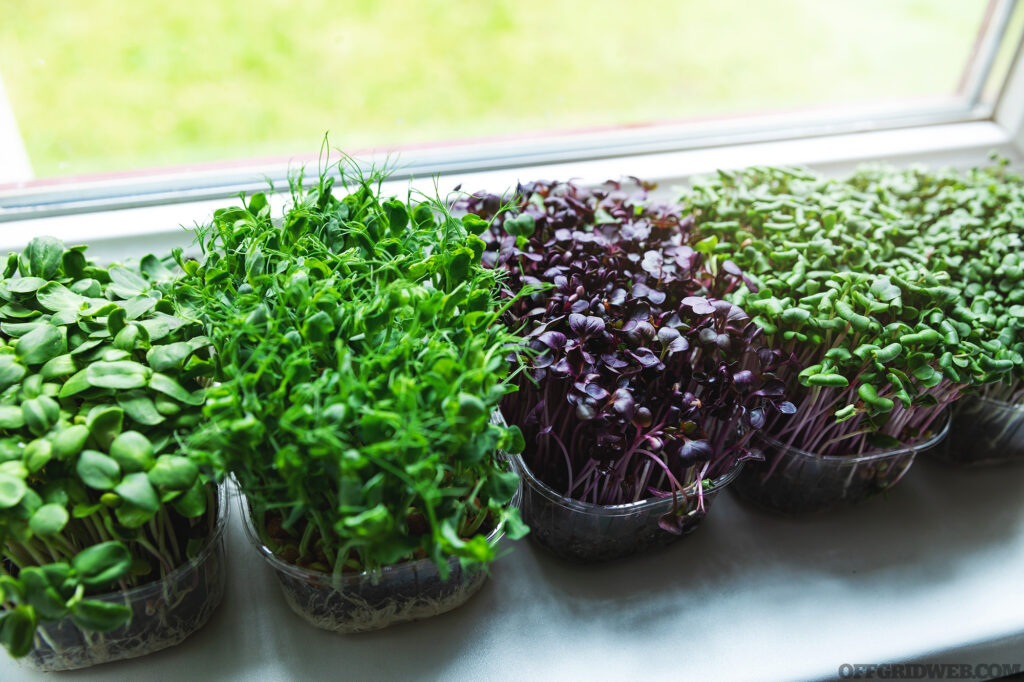
Tapping all Resources
When we hear of sugar maple sap being collected in the U.S., we assume the only goal is syrup, but in Korea, it’s a tradition to drink the sap of the maple tree, known as gorosoe, as a health tonic, often while relaxing beneath the tree that supplied it.
Likewise, bottled birch and maple sap have shown up in American health food stores and high-end grocery chains in the last few years, and research does indicate that this liquid can add a boost of copper, zinc, magnesium, and other elements to the diet, in addition to providing hydration. (Few water filters are as effective as a tree’s cambial system.) Sycamore and walnut can also be tapped and either cooked into syrup with an investment of time and fuel or drank as is.

While not a huge contributor to overall health, the equipment to extract gallons and gallons of sap is minimal: inexpensive plastic spouts, a bit of tubing, and some buckets. And in situations where you’re living off a finite number of foods for a long period of time, anything that can provide a few more micronutrients is going to be worthwhile. Of course, when time allows, cooking down the sap from any of these aforementioned trees will yield a sweet syrup that can be used or bartered.
Sap can’t be extracted from a tree year-round, and the timing varies across the country. In Southwest Virginia, for instance, the maple, walnuts, and sycamores flow in January and February, while birches can be tapped later in the spring. The bigleaf maples in Washington State are usually tapped around Christmas time, while things aren’t in full swing in New England until March. You would need to know when sap flows in your location, and that’s going to be when nighttime temperatures are well below freezing, but days warm up to the mid 40s or 50s (Fahrenheit).
It pays to become acquainted with these foods and production methods before they’re needed. Inoculate some shiitake logs this fall. Sprout some radish, mung bean, and alfalfa seeds on the kitchen counter to see how receptive your family is to their taste and texture. Grow some potatoes and carrots in felt bags, even if you have a two-acre garden to work with. While you’re at it, grow some hydroponic jalapenos on the back deck. Strive to provide your backyard chickens with all the nutrition they require while relying less and less on commercial feeds. Take inventory of which tree species are on your property or around your bugout location, and plan to learn the sap collection process when possible.
As good as white rice and pinto beans can be, they can always be improved with a few chunks of shiitake mushroom or a sprinkling of radish sprouts.
The post Transitional Food Preps: Staying Fed Between Storage and Cultivation appeared first on RECOIL OFFGRID.
By: Patrick Diedrich
Title: Transitional Food Preps: Staying Fed Between Storage and Cultivation
Sourced From: www.offgridweb.com/preparation/transitional-food-preps-staying-fed-between-storage-and-cultivation/
Published Date: Fri, 26 May 2023 20:08:48 +0000
------------------------
Did you miss our previous article...
https://bushcrafttips.com/bushcraft-news/diy-pepper-spray-recipe-effective-and-dirtcheap
 What is BushcraftSurvival SkillsToolsVideosBushcraft CampsBushcraft KitsBushcraft ProjectsPrivacy PolicyTerms And Conditions
What is BushcraftSurvival SkillsToolsVideosBushcraft CampsBushcraft KitsBushcraft ProjectsPrivacy PolicyTerms And Conditions
